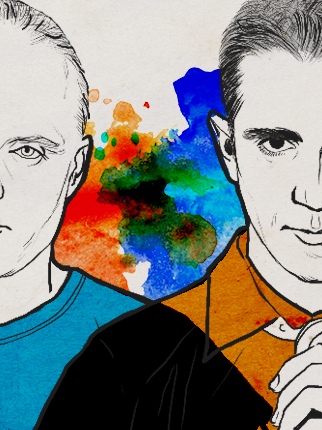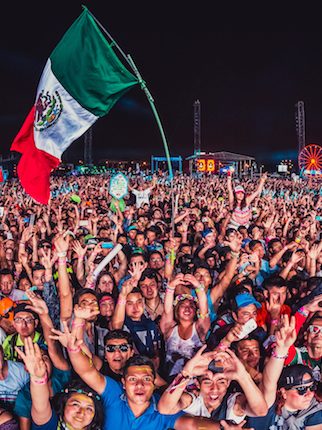Solarstone Pushes the Pure Trance Sound Forward
Three years ago, Solarstone felt like there was no longer a place for him in the electronic dance music scene. After 15 years of producing trance classics like “Seven Cities” and “4ever,” he felt the genre had lost what he loved most about the music: the melodic and euphoric sounds of traditional trance. In an effort to return to his roots, Solarstone released his fourth, and what he thought to be his final, album, Pure. He even named the last track “Swansong,” a nod to potential retirement.

Little did the UK artist, born Richard Mowatt, know the album would create a worldwide movement in trance that united millions of fans. Via his Pure Trance movement, Solarstone has taken the best trance elements to create the purest melodies, tracks, compilations and events the genre has to offer, despite the current trends and fads. We spoke to Solarstone to talk about Pure Trance, today’s electronic music culture, and his new Pure NRG project.
How did the audience response to your album Pure help influence your decision to reclaim trance and push forward the Pure Trance movement?
I really didn’t think anybody would be interested in it, but the response to the first couple of singles was so big that the momentum grew, and it started to grow organically. There were lots of other people in the world at the time that shared my opinion about the warm, melodic, euphoric emotions missing in trance today. I did the first Pure Trance mix compilation in 2012, as a collection of music from artists that I respected and some of my own stuff. I asked Orkidea to mix the second disc because he was one of the few producers I felt could stay true to his roots. Then it kind of grew from there, including launching our own events.
This Pure Trance movement is a lifestyle for them.
What makes Pure Trance events different from other trance events today?
Promoters would put on trance events with an array of DJs like Lange, Andrew Rayel and Andy Moor, but their sounds and fans would be so different that you couldn’t take people on a proper journey. With Pure Trance events, it’s not about how popular they are, where they are in the DJ Mag Top 100, how big their egos are, or what assholes their managers are. We just do things in a way that makes sense musically. We want a constant build through the night, so that it starts off deep and ends insane.
Do you feel this is one of the big differences between trance and EDM?
There’s kind of this inherent snobbery in the electronic music scene with trance. But trance music is quite sophisticated, and it’s got real depth. If you take away all the fireworks, the flames, the glitter, and the massive sound systems of big-room EDM, the music doesn’t really stand on its own. With trance, you can strip away everything until you just have the music, and it’s still immersive and engaging. It’s got real musical qualities. Trance has more in common with classical music than any other form of electronic music. It’s got harmony, depth, builds, structure and waves.
With Pure Trance events, it’s not about how popular they are, where they are in the DJ Mag Top 100, how big their egos are, or what assholes their managers are.
Yet EDM is what’s most popular. Why do you think that is?
The media focuses on what’s fashionable and what’s cool. Trance has never been cool. It’s always been very uncool. When people come to our Pure Trance events and buy our records, they do it because they love the music. A lot of people go to these big EDM festivals, and they dance and have a good time. But ask them to name one of the tracks, and they probably couldn’t—because it’s more about the experience. Trance touches people on a deeper level. This is the feedback we get from people. This Pure Trance movement is a lifestyle for them.
Is that why you made your “Dubstep is Dead. Viva la Trance!” shirts?
I don’t really think dubstep is dead. People have been saying that trance is dead since 2001. Quite clearly, trance is not dead. It’s very, very healthy. That T-shirt is making a statement that we’re here, too. No matter what the current fashionable genre is, trance is always going to be there in the underground, because it’s real music and people love it.
How did you team up with Giuseppe Ottaviani to form Pure NRG?
We were in Australia, and Giuseppe had mentioned that he loves performing live, but he wouldn’t mind teaming up with somebody to do it with him. I was in a live band 20 years ago, and we thought, “Why don’t we just do it together?” The name came from my Pure brand, and he used to be New Energy, so Pure NRG was formed. We had our first gig confirmed, and we hadn’t even written any music. Then we went into the studio for a couple of days and just wrote. It’s all stripped down and quite raw. If you come to the live show, it’s music you’re not going to hear anywhere else.
Solarstone brings Pure Trance to Exchange LA in Downtown Los Angeles this Friday, May 15, with Orkidea and Sneijder. Tickets are available now.
Follow Solarstone on Facebook | Twitter
Follow Pure Trance on Facebook | Twitter




